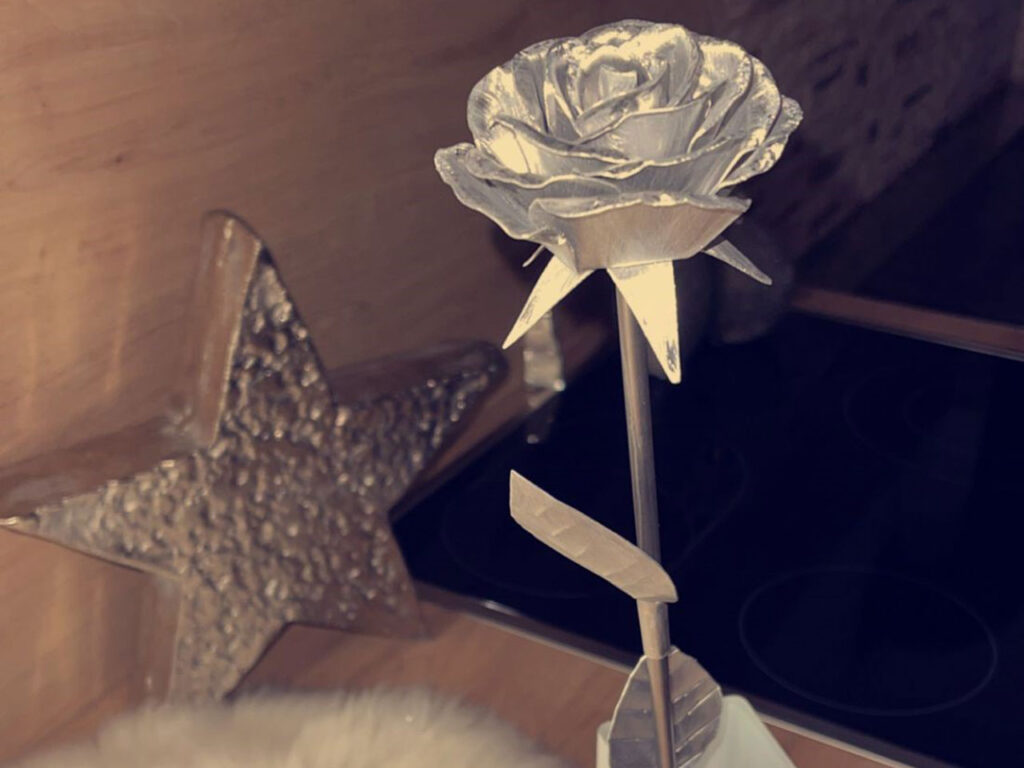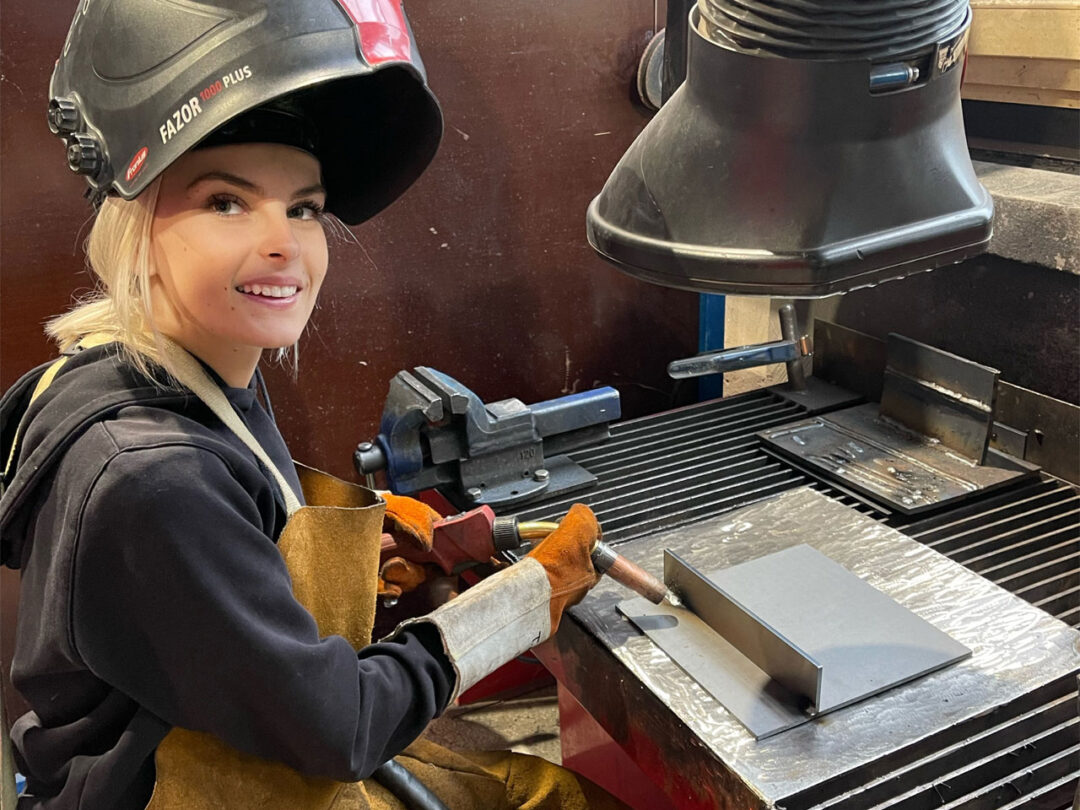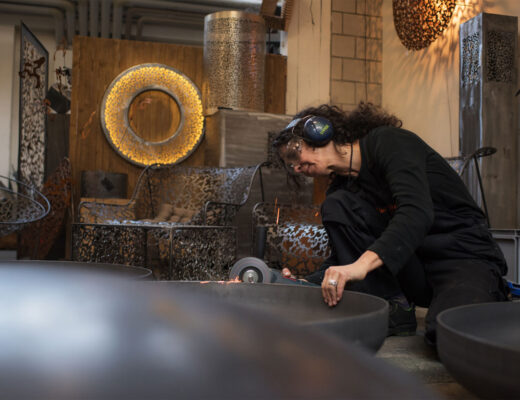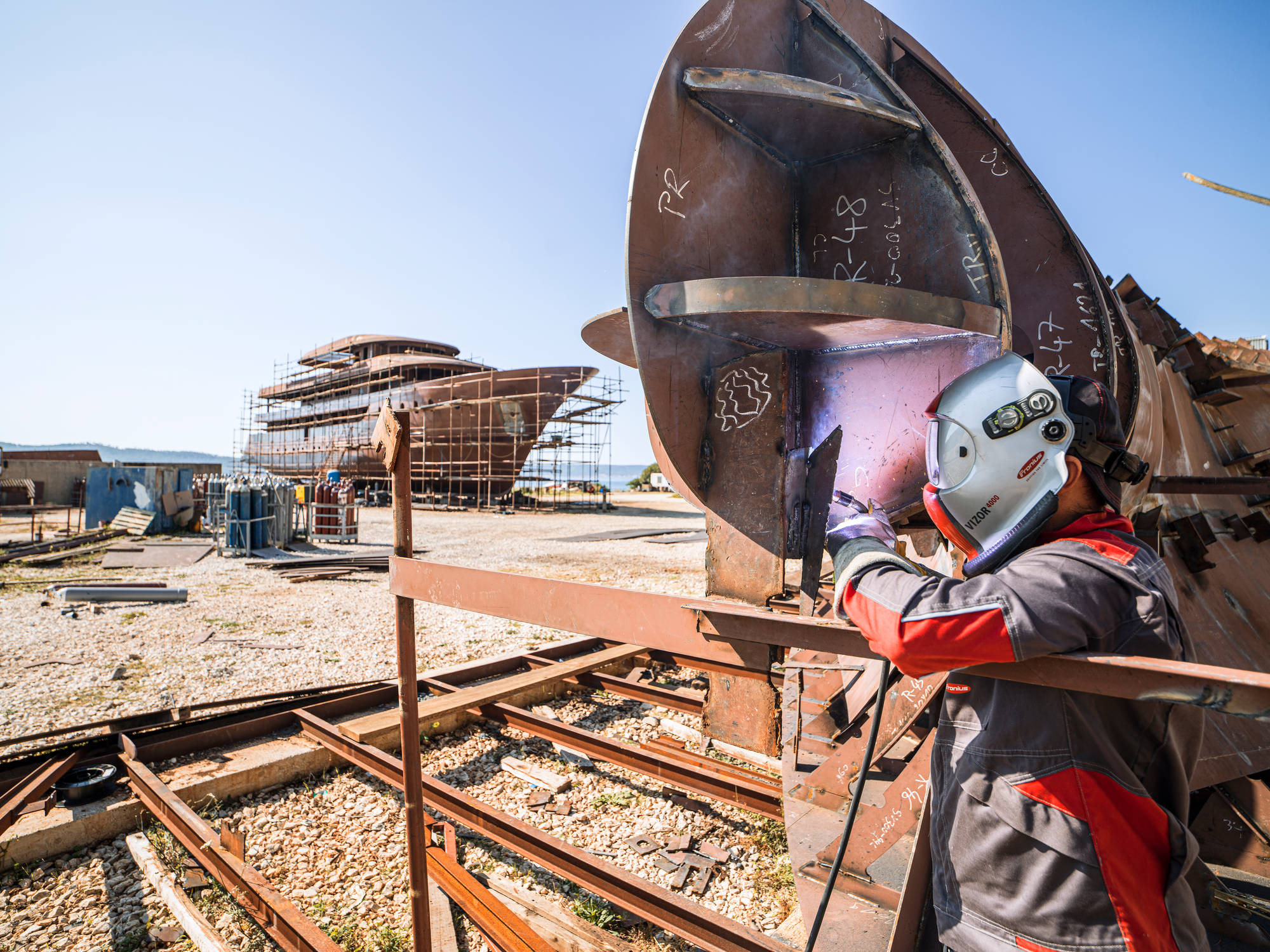Goodbye pantsuit. Hello workshop. After learning a lot as an office administrator and with a great deal of experience under her belt, Tatjana had reached the point where she knew that “This isn’t it. This isn’t what I want to do. I’m going to look for something new.” And just like that she left her office job and started an apprenticeship as a mechanical engineer. Read on to find out how she got on after making the switch, the advantages she ascribes to being a woman in this field, and why women like Tatjana could be key in the combating the skills shortage.
Manual worker through and through
“I am so glad I took this step,” said Tatjana to herself on the first day of her apprenticeship as a mechanical engineer. She felt that her previous job lacked variety. Spending the whole day in the office, mostly sat down, was just not for her in the long run. “I’ve always been an active person, I always used to help with all the manual tasks at home. Even then I realized that I really enjoyed this kind of work.” Whether it’s with wood or iron, Tatjana has always been fascinated by what you can make yourself with a variety of materials. “I had the advantage of being the only child in the house, so I was taken everywhere as a young girl. So my dad and my granddad definitely played a role in my choice of career.”
Detours to her dream job
Tatjana believes that she found her way to manual work via a conventional office job due to her desire for a “solid” education when she was younger. “I was aware right from the start that a manual profession suited me better, but I wanted to learn office work first, in case the manual career didn’t go so well. An apprenticeship as an office administrator seemed the most sensible option at the time,” she says looking back.
Tatjana is 22 years old. She started her apprenticeship as an office administrator at 18 which she completed by age 20. Afterwards she worked in this field for around a year before beginning an apprenticeship as a mechanical engineer – completing this in 1.5 instead of 3 years – as she had already completed an apprenticeship.
Turning, milling, welding: a complete-package apprenticeship
Tatjana found the mechanical engineering apprenticeship to be exciting and varied, with turning, milling, welding, metalworking, or activities in the workshop all on the agenda. “Sometimes you’re turning, then milling, then you’re doing some welding, then you’re back in the metalworking shop. This career is so varied,” she concludes. She estimates that welding accounts for about 40 percent of her workload. However, it always depends on what you are doing and where you work after the apprenticeship. In a metalworking shop, you would tend to do more welding than in a larger company where you are mainly working in the area of CNC and therefore more likely to be turning and milling.
Welding as an art form
Tatjana loves being able to let loose creatively and master something that not everyone can. She is fascinated by welding and how she can use it to create works of art and connect metals to one another. “Something comes into being, whether that is a railing or a work of art. And I’m fascinated by how the whole thing works too. It’s exciting. And you see the results at the end of the day.”
Her artistic flair drew her to TIG welding in particular. She creates works of art – stars, flowers, and other objects – for herself and other people. “I really enjoy this work because I can make other people happy as well as myself. For example, I once welded a rose for my mom and a star at Christmas.” Projects such as these take about one working day on average, but she sees it more as a hobby. “It doesn’t feel like work at all. Which is how I also know that it’s right for me.”


About the “doll image” and gender stereotypes
Pre-existing thought patterns can be hard to shift – especially in fields such as manual work, which has traditionally been viewed as a man’s domain. This can give women the feeling that they have to be able to prove they can do the same as their male colleagues in order to be accepted.
This is also true for Tatjana: “I hope that at some point it will be perfectly natural for women to go into these careers. At the moment, I feel that I have to prove myself first. But this is also often down to the image that people have of me.” Blond, slim, and petite – when one sees Tatjana for the first time, mechanical engineer is not necessarily the first thing that comes to mind. Due to her “doll image”, as she says herself, she’s not always trusted with the work right away. “When your colleagues see that you can do it, then they let up with it. And I believe that we are on the right path. At some point, it won’t matter anymore whether there’s a man or a woman using a welding system. Until then, we just have to be patient a little bit longer. And, we have to get more women into manual professions.”
This is also important because Tatjana believes women bring added value to this field. “For me, welding isn’t about strength, but patience and dexterity. Among my colleagues and myself, I’ve observed that we tend to be more skillful with our hands than our male colleagues.” This is also supported by a study by the University of Munich, which found that manual dexterity of women was around 10 percent higher than men and finger dexterity was around 6 percent higher.
“Basically I think men and women complement each other well. Each brings strengths in various places, a mixture is ideal, including in manual work,” summarizes Tatjana.
Women as the key to the skills shortage
In Tatjana’s apprenticeship, only 2 out of 18 people were women – figures that confirm that this field moves slowly when it comes to the proportion of women. If more women are inspired to take up manual work, this could be the key to the skills shortage. According to a survey by auditor EY, 83% of companies in Austria are still experiencing difficulties in recruiting skilled workers.
Breaking down gender stereotypes in regard to typical “women’s work” or “men’s work” could perhaps begin as early as careers guidance in schools. Project such as “Women and manual work: Ready for leadership and digitalization“ or initiatives such as “FiT – Women in manual work and technology” can play an important role in women stepping outside the framework which is often imposed by society and seeing the opportunities that are available to them in the field of manual work or other career paths.
It is never too late for a fresh start
“Whether you’re 20 or 50, these days you can change careers at any time.
We have so many opportunities.
I think when you have been working in a sector for a few years
and feel like completely changing industries,
it’s being in the comfort zone that often holds you back.
Many might think to themselves, it means another year of training,
being financially limited again, etc.
But what is the alternative?
Working your whole life in a job that doesn’t fulfill you?
The smarter decision is to complete some training for a foreseeable
period of time which leads to your dream job.
Sometimes you simply have to step out of your comfort zone.
It might feel nice there but it stops you progressing”.
They say experience is the best teacher, so she advises women who think they may be better suited to manual work to simply try it out. You will soon find out whether you have the necessary skills – especially with welding.
What does the future hold?
Tatjana recently completed her apprenticeship as a mechanical engineer and is now working as a maintenance technician at a global market leader in plastic and foam solutions. She can envisage herself as head of department or shift supervisor in future. She also wants to achieve something with her art works. She dreams of being able to sell them and is considering advertising them on social media. Who knows, perhaps she will become the next welding influencer!
Want to know more about how other women are getting on in becoming welders? Take a look at our blog post about the career path of Cinnamon Digan. Enjoy!
 Perfect Welding Blog
Perfect Welding Blog




2 Comments
all about Ship
26. April 2023 at 10:02The value of breaking gender stereotypes and embracing diversity in these industries should be effective, as women can offer new ideas, techniques, and problem-solving skills that can ultimately improve the industry as a whole. Women in this field can bring a fresh perspective and approach to the work, which can result in more innovative and efficient practices.
all about Ship
Rickys Welding Equipment and Tools
2. August 2023 at 7:41Tatjana’s journey to becoming a mechanical engineer is inspiring. It’s great to see someone recognize their passion and make a career change to pursue it. Tatjana’s love for manual work and her creative flair in welding is truly impressive. It’s important to break down gender stereotypes in the field of manual work and encourage more women to pursue careers in this industry. Tatjana’s experience highlights the valuable skills and perspectives that women can bring to the field. I wish Tatjana all the best in her career as a maintenance technician and in her artistic endeavors. Rick Tillman Rickys Welding Equipment and Tools